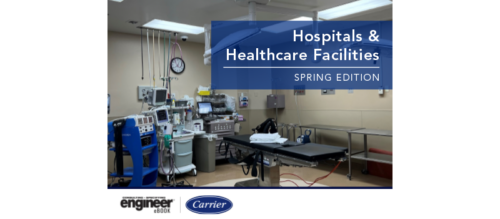Barton Associates Inc.: UPMC Shadyside Hospital West Wing Renovations
Automation, controls; electrical, power; fire, life safety; HVAC, mechanical; lighting; plumbing, piping; low voltage cabling and medical gas/vacuum systems; health care facility; and existing building retrofit
Engineering firm: Barton Associates Inc.
2018 MEP Giants rank: 97
Project: UPMC Shadyside Hospital West Wing Renovations
Location: Pittsburgh, PA, United States
Building type: Hospital/health care facility
Project type: Existing building retrofit
Engineering services: Automation, controls; electrical, power; fire, life safety; HVAC, mechanical; lighting; plumbing, piping; and low-voltage cabling and medical gas/vacuum systems
Project timeline: March 2017 to January 2021
MEP/FP budget: $18,800,000
Challenges
The University of Pittsburgh Medical Center Shadyside Hospital West Wing project entails the complete renovation of five floors to an existing patient bed tower.In order to support the hospital’s patient census, the renovations were designed to have construction be phased floor by floor.
Two major challenges related to the required phasing arose during design:
1. Four of the floors to be renovated are served by two primary air handling units with each unit serving two floors. Both of the air handling units are over 30 years old and in need of significant upgrades/refurbishment which would require 2 to 3 months shut-down per unit. Because each air handling unit serves two floors, there was a significant challenge to identify a way to take each unit offline for upgrades while maintaining required airflow to the remaining floor(s) served by the unit.
2. Developing a design and construction phasing approach that permitted existing plumbing risers to remain in service for floors above and below the floor of renovation.The bed tower consists of private rooms, each with its own bathroom.The bathrooms on each floor were stacked with multiple plumbing risers (sanitary, vent,and domestic water) through the floor plate.It was impractical to locate new plumbing risers so Barton’steam needed to focus on a design that permitted the bulk of the existing risers to remain in service as each phase of construction progressed so that the toilet rooms above and below the area of work could remain in service.
Solutions
The Barton team approached both challenges with a hands-on approach that began with detailed survey of the existing building and systems and involved an integrated approach with the hospital’s facility engineering team.
Engineers evaluated multiple options and scenarios to support the required air handling unit upgrades,including temporary rental units.Through a detailed analysis of the existing building requirements and existing air handling unit performance data, the team determined that, with proper air balancing, each air handling unit would have the capacity to serve three of the four floors.The team detailed a cross-connect to be installed between the supply and return air risers from each unit on our first floor of renovation.With this cross-connect in place, each of the air handling units could be taken offline and refurbished while the second unit remained online to serve the remaining floors.The air handler upgrade work was closely coordinated with the contractors so that both units could be refurbished during the first phase of construction, permitting the cross-connects to be removed at the conclusion of the phase.
A similar approach was used to tackle the second challenge, maintaining existing plumbing risers active during construction.Barton’steam conducted detailed survey and analysis of the existing risers and areas served by each.Through a detailed set of phasing riser diagrams, the team documented the necessary offsets and relocations physically shift the risers one floor at a time.Shut-off valves were installed on the domestic water lines during a single key shutdown during the first phase of construction.These strategically located valves permitted each future floor to be isolated from the risers without an entire building shut-down.Through close coordination with the contractor, a phasing plan was developed to offset/relocate the plumbing risers one floor at a time with temporary connections back to feed the existing risers.These temporary connections will eventually be removed at the end of construction after the risers have been effectively offset/relocated through all floors of the building.
In the end, it was a collaborative effort between Barton Associates,the architect, owner,and contractor that has allowed this project to progress smoothly through a difficult phased construction process.
Do you have experience and expertise with the topics mentioned in this content? You should consider contributing to our CFE Media editorial team and getting the recognition you and your company deserve. Click here to start this process.


